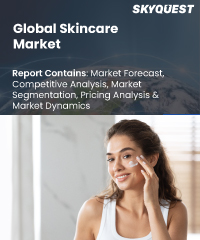
Product ID: SQMIG30L2192

Report ID:
SQMIG30L2192 |
Region:
Global |
Published Date: February, 2024
Pages:
157
|
Tables:
117 |
Figures:
77
Skincare Market Driver
Ease of Access
Shift in Demographics
Skincare Market Restraint
Sale of Pseudo Products at Reduced Prices
Increasing awareness of probable side effects of cosmetics
Our industry expert will work with you to provide you with customized data in a short amount of time.
REQUEST FREE CUSTOMIZATIONSkincare Market size was valued at USD 130.5 billion in 2019 and is poised to grow from USD 136.5 billion in 2023 to USD 204.61 billion by 2031, growing at a CAGR of 4.6% in the forecast period (2024-2031).
Want to customize this report? This report can be personalized according to your needs. Our analysts and industry experts will work directly with you to understand your requirements and provide you with customized data in a short amount of time. We offer $1000 worth of FREE customization at the time of purchase.

Product ID: SQMIG30L2192